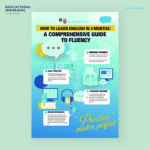In the digital age, remote work etiquette has become a cornerstone of professional success. With distributed teams spanning time zones and cultures, building trust online is not just a soft skill—it’s a critical competency. We understand the nuances of fostering authentic connections in virtual environments, and this comprehensive guide outlines actionable strategies to cultivate trust, professionalism, and collaboration in remote settings. From clear communication to leveraging technology effectively, we’ll explore how to excel in the virtual workplace while adhering to best practices for remote work etiquette.
- Why Remote Work Etiquette Matters
- Establishing Clear Communication Norms
- Mastering Virtual Meeting Etiquette
- Leveraging Technology for Trust-Building
- Cultivating a Positive Virtual Culture
- Overcoming Common Remote Work Challenges
- Building Long-Term Trust in Remote Teams
- Tools and Resources for Remote Work Success
- Case Studies: Successful Remote Teams
- Advanced Strategies for Remote Work Etiquette
- Suggestions and Recommendations
- FAQs
Why Remote Work Etiquette Matters
The shift to remote work has redefined how teams collaborate. Without physical proximity, trust becomes the glue that holds distributed teams together. Remote work etiquette ensures that interactions remain respectful, productive, and inclusive, fostering a sense of belonging despite geographical distances. When team members adhere to etiquette guidelines, they create a culture of accountability, transparency, and mutual respect—key ingredients for building trust online.
Poor etiquette, such as inconsistent communication or neglecting virtual meeting norms, can erode trust and hinder collaboration. By mastering remote work etiquette, we empower ourselves to create meaningful connections, drive productivity, and maintain a positive virtual work environment. This article delves into practical strategies, tools, and behaviors to help remote workers thrive.
Establishing Clear Communication Norms
Effective communication is the foundation of remote work etiquette. In a virtual setting, where body language and spontaneous interactions are limited, clarity and intentionality are paramount. Here’s how we can establish communication norms that build trust:
Set Expectations for Response Times
Timely responses signal reliability. We recommend defining clear response time expectations within teams. For example:
- Emails: Respond within 24–48 hours, depending on urgency.
- Instant Messages: Acknowledge within 1–2 hours during work hours.
- Project Updates: Provide regular updates to keep stakeholders informed.
By setting and adhering to these timelines, we demonstrate respect for colleagues’ time and foster trust through consistency.
Choose the Right Communication Channel
Selecting the appropriate tool for communication prevents misunderstandings. We suggest:
- Email for formal updates, detailed feedback, or announcements.
- Instant Messaging (e.g., Slack, Microsoft Teams) for quick questions or informal chats.
- Video Calls for complex discussions or brainstorming sessions.
- Project Management Tools (e.g., Asana, Trello) for task updates and documentation.
Using the right channel ensures clarity and reduces the risk of miscommunication, reinforcing trust in virtual interactions.
Practice Active Listening
In virtual meetings, active listening builds rapport. We can show engagement by:
- Paraphrasing key points to confirm understanding.
- Asking clarifying questions to demonstrate interest.
- Avoiding multitasking during calls to stay fully present.
Active listening fosters mutual respect and strengthens relationships, key components of trust.
Mastering Virtual Meeting Etiquette
Virtual meetings are a cornerstone of remote collaboration, but they require specific etiquette to be effective. By following these best practices, we can ensure meetings are productive and trust-building.
Prepare Thoroughly for Meetings
Preparation signals professionalism. Before a virtual meeting, we should:
- Test audio and video equipment to avoid technical disruptions.
- Review agendas and materials to contribute meaningfully.
- Join meetings 2–3 minutes early to show punctuality.
Preparedness demonstrates respect for colleagues’ time and sets a positive tone.
Minimize Distractions
A distraction-free environment enhances focus. We recommend:
- Muting microphones when not speaking to reduce background noise.
- Using professional backgrounds or blurring options for video calls.
- Avoiding side conversations or multitasking during meetings.
These actions show respect for the meeting’s purpose and participants, reinforcing trust.
Engage Actively and Inclusively
Engagement in virtual meetings builds connection. We can:
- Use video when possible to foster personal connection.
- Encourage quieter team members to share ideas.
- Acknowledge contributions to create an inclusive environment.
Active participation signals commitment to the team’s goals and strengthens trust.
Leveraging Technology for Trust-Building
Technology is the backbone of remote work, and using it effectively is a key aspect of remote work etiquette. By mastering tools and platforms, we enhance collaboration and reliability.
Adopt Collaborative Tools
Tools like Slack, Zoom, and Google Workspace streamline communication and project management. We should:
- Familiarize ourselves with team-preferred tools.
- Use shared documents for real-time collaboration.
- Keep tools updated to ensure security and functionality.
Proficiency in these tools demonstrates competence and reliability.
Ensure Data Security
Trust extends to protecting sensitive information. We can:
- Use secure, company-approved platforms for communication.
- Enable two-factor authentication for accounts.
- Avoid sharing confidential information on unsecured channels.
Prioritizing security builds confidence in our professionalism.
Document Processes and Decisions
Clear documentation prevents miscommunication. We recommend:
- Recording meeting notes in shared platforms like Notion or Confluence.
- Updating project statuses in tools like Jira or Monday.com.
- Sharing summaries of key decisions via email or chat.
Transparent documentation fosters accountability and trust.
Cultivating a Positive Virtual Culture
A strong team culture is vital for remote teams. By prioritizing inclusivity, recognition, and empathy, we can create a virtual environment where trust thrives.
Foster Inclusivity Across Time Zones
Remote teams often span multiple time zones, requiring sensitivity. We can:
- Schedule meetings at times that accommodate all participants.
- Rotate meeting times to share the burden of inconvenient hours.
- Use asynchronous communication for non-urgent updates.
Inclusivity shows respect for diverse team members, strengthening trust.
Recognize Contributions Publicly
Acknowledging achievements builds morale. We suggest:
- Highlighting team members’ successes in group channels.
- Celebrating milestones, such as project completions, via virtual events.
- Providing specific, constructive feedback to show appreciation.
Recognition fosters a sense of value and trust within teams.
Show Empathy and Flexibility
Empathy is a cornerstone of remote work etiquette. We can:
- Check in on colleagues’ well-being during one-on-one meetings.
- Be flexible with deadlines when personal circumstances arise.
- Communicate openly about challenges to encourage mutual support.
Empathy creates a supportive environment where trust flourishes.
Overcoming Common Remote Work Challenges
Remote work presents unique challenges that can undermine trust if not addressed. By proactively tackling these issues, we ensure a cohesive virtual workplace.
Combatting Isolation
Isolation can erode team cohesion. To stay connected, we can:
- Host virtual coffee chats or team-building activities.
- Encourage informal check-ins via chat platforms.
- Create dedicated channels for non-work discussions, like hobbies or interests.
These efforts maintain personal connections and trust.
Managing Miscommunication
Miscommunication is common in virtual settings. We can mitigate it by:
- Using clear, concise language in written communication.
- Confirming understanding through follow-up questions.
- Providing context for tasks to avoid assumptions.
Clarity reduces confusion and builds trust.
Balancing Work and Life
Remote work blurs boundaries between professional and personal life. To maintain balance, we should:
- Set clear work hours and communicate them to the team.
- Take regular breaks to avoid burnout.
- Respect colleagues’ non-work hours by avoiding after-hours messages.
Respecting boundaries fosters mutual trust and well-being.
Building Long-Term Trust in Remote Teams
Trust is not built overnight—it requires consistent effort. By embedding remote work etiquette into daily practices, we create a sustainable foundation for collaboration.
Lead by Example
Leaders set the tone for etiquette. We can:
- Model punctuality, clarity, and respect in all interactions.
- Share transparent updates on team goals and progress.
- Encourage open feedback to foster a culture of trust.
Leadership behaviors ripple through teams, reinforcing trust.
Invest in Professional Development
Continuous learning enhances team capabilities. We recommend:
- Offering training on virtual collaboration tools.
- Encouraging skill-sharing sessions within teams.
- Providing resources for improving communication skills.
Investing in growth shows commitment to team success and trust.
Regularly Evaluate and Adapt
Remote work evolves, and so should our practices. We can:
- Conduct quarterly surveys to gather feedback on team dynamics.
- Update communication norms based on team needs.
- Experiment with new tools to enhance collaboration.
Adaptability ensures that trust remains strong as teams grow.
Tools and Resources for Remote Work Success
To support remote work etiquette, we can leverage a variety of tools and resources designed for virtual collaboration. Here’s a detailed list:
- Communication Tools:
- Slack: For instant messaging and team channels.
- Microsoft Teams: For integrated chat, video, and file sharing.
- Zoom: For reliable video conferencing.
- Project Management Tools:
- Trello: For visual task tracking.
- Asana: For detailed project workflows.
- Jira: For agile project management.
- Documentation Tools:
- Notion: For collaborative note-taking and wikis.
- Google Docs: For real-time document editing.
- Confluence: For enterprise-level documentation.
- Time Zone Management:
- World Time Buddy: For scheduling across time zones.
- Every Time Zone: For visualizing global time differences.
By integrating these tools into daily workflows, we streamline communication and reinforce trust.
Case Studies: Successful Remote Teams
To illustrate the impact of remote work etiquette, let’s explore real-world examples of teams that have excelled in virtual environments.
GitLab: A Fully Remote Success Story
GitLab, a web-based DevOps platform, operates with a fully remote workforce of over 1,500 employees across 60+ countries. Their success hinges on:
- Transparent documentation in a public handbook.
- Asynchronous communication to accommodate time zones.
- Regular virtual team-building events to foster connection.
By prioritizing remote work etiquette, GitLab maintains a high-trust culture that drives innovation.
Zapier: Scaling Trust Through Automation
Zapier, an automation platform, supports a remote team of hundreds. Their approach includes:
- Clear communication norms, such as 24-hour response times.
- Extensive use of Slack for informal and formal updates.
- Virtual “pair programming” sessions to encourage collaboration.
Zapier’s commitment to etiquette has enabled seamless scaling while maintaining trust.
Advanced Strategies for Remote Work Etiquette
For teams seeking to elevate their remote work etiquette, consider these advanced techniques:
Implement a Trust Scorecard
Create a team scorecard to measure trust-building behaviors, such as:
- Timeliness of responses.
- Clarity of communication.
- Inclusivity in meetings.
Review the scorecard quarterly to identify areas for improvement.
Use AI-Powered Insights
AI tools can analyze team communication patterns to suggest improvements. For example:
- Sentiment analysis to gauge team morale.
- Meeting analytics to assess participation levels.
- Workflow automation to reduce repetitive tasks.
These insights enhance efficiency and trust.
Host Virtual Retreats
Annual or biannual virtual retreats can strengthen team bonds. Activities might include:
- Interactive workshops on team goals.
- Virtual escape rooms or trivia games.
- Guest speakers on remote work trends.
Retreats create shared experiences that deepen trust.
Suggestions and Recommendations
To excel in remote work etiquette and build trust online, we recommend:
- Establishing and communicating clear communication norms.
- Investing in reliable, secure technology for collaboration.
- Prioritizing inclusivity and empathy in all interactions.
- Regularly evaluating team dynamics and adapting practices.
- Leveraging tools like Slack, Zoom, and Trello to streamline workflows.
- Recognizing contributions and fostering a positive virtual culture.
By embedding these practices into daily routines, we create a high-trust remote work environment that drives success.
FAQs
- What is remote work etiquette?
Remote work etiquette refers to the professional behaviors and practices that ensure respectful, effective collaboration in virtual work environments. - Why is trust important in remote work?
Trust fosters collaboration, accountability, and productivity in distributed teams, where physical interactions are limited. - How can I improve communication in remote teams?
Set clear response time expectations, choose appropriate communication channels, and practice active listening. - What tools are best for remote collaboration?
Tools like Slack, Zoom, Trello, and Notion streamline communication and project management. - How do I stay professional in virtual meetings?
Prepare thoroughly, minimize distractions, and engage actively with video and inclusive participation. - How can I combat isolation in remote work?
Host virtual team-building activities, encourage informal check-ins, and create non-work chat channels. - What role does empathy play in remote work?
Empathy builds trust by showing respect for colleagues’ challenges and fostering a supportive environment. - How do I manage time zone differences?
Use asynchronous communication, rotate meeting times, and leverage time zone tools like World Time Buddy. - How can leaders model remote work etiquette?
Leaders should demonstrate punctuality, clarity, and inclusivity in all interactions. - What is asynchronous communication?
Asynchronous communication involves sharing updates or tasks without requiring immediate responses, ideal for distributed teams. - How do I ensure data security in remote work?
Use secure platforms, enable two-factor authentication, and avoid sharing sensitive information on unsecured channels. - Why is documentation important in remote work?
Clear documentation prevents miscommunication and ensures transparency, fostering trust. - How can I balance work and life in remote settings?
Set clear work hours, take breaks, and respect colleagues’ non-work hours. - What are virtual retreats, and why are they useful?
Virtual retreats are online team-building events that strengthen bonds and trust through shared experiences. - How do I measure trust in remote teams?
Use a trust scorecard to track behaviors like timeliness, clarity, and inclusivity, and review it regularly.




















